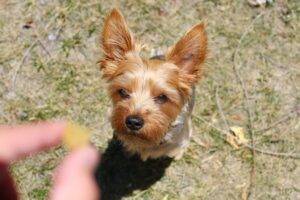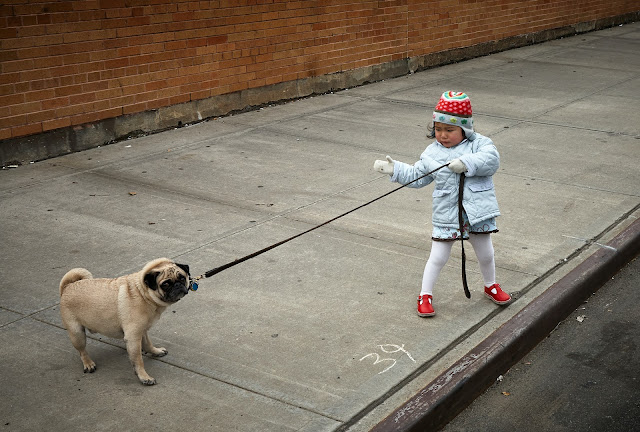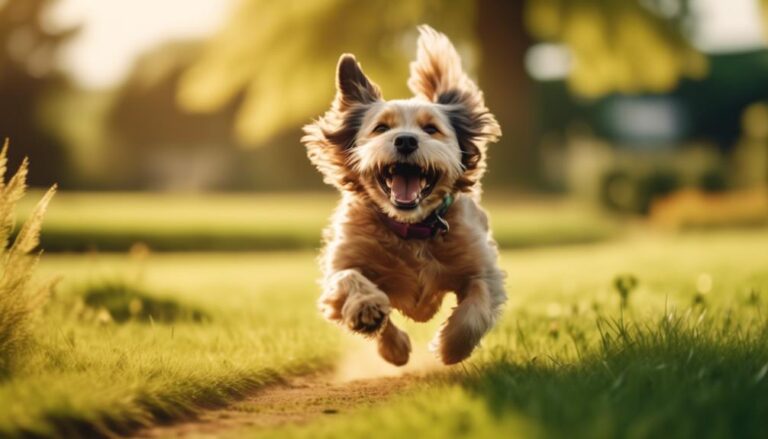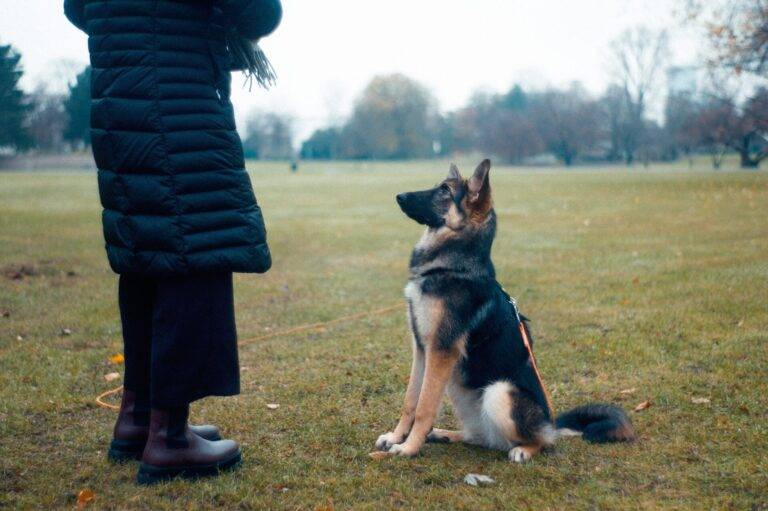The Seven Stages Of Dog Training
Training your furry friend is an essential part of building a strong bond and ensuring a well-behaved companion. In this blog post, we will dive deep into the seven stages of dog training that are crucial for transforming a rambunctious pup into a well-mannered pet. From basic commands to advanced obedience, these stages will provide a roadmap for your dog’s learning journey. So, let’s get started and explore these seven milestones that’ll make a world of difference in your pet’s behavior and happiness.
Understanding the Seven Stages of Dog Training
Dog training can be a fun and rewarding experience for both you and your furry friend. However, it can also be a daunting task if you don’t know where to start. Fortunately, understanding the seven stages of dog training can make the process much more manageable.
Learning the Basics of Dog Training
Before delving into the seven stages of dog training, it’s essential to understand the basics of dog training. Positive reinforcement is the cornerstone of any effective dog training program.
Positive reinforcement involves rewarding your dog for good behavior, rather than punishing them for bad behavior. Rewards can include treats, praise, or playtime. Consistency is also crucial in dog training. Dogs thrive on routine, and it’s important to establish a consistent training schedule.
The Seven Stages of Dog Training
The seven stages of dog training are as follows:
1. The Pre-Training Stage
2. The Introduction Stage
3. The Marker Training Stage
4. The Shape Training Stage
5. The Command Discrimination Stage
6. The Proofing Stage
7. The Maintenance Stage
——————————-
Get access to the best pet discounts, items, and training by clicking the link below
————————————-
1. The Pre-Training Stage
The pre-training stage is all about building a bond with your dog and establishing trust. This stage involves getting to know your dog’s personality, likes, and dislikes. You will also begin to establish basic commands like “sit” and “stay.”
2. The Introduction Stage
During the introduction stage, you will introduce your dog to more advanced commands like “come” and “heel.” You will also begin to work on leash training and socialization.
3. The Marker Training Stage
The marker training stage involves using a clicker or other marker to signal to your dog that they have done something correctly. This stage is all about reinforcing good behavior and building your dog’s confidence.
4. The Shape Training Stage
In the shape training stage, you will begin to shape your dog’s behavior by rewarding small steps toward a larger goal. For example, if you want your dog to roll over, you will begin by rewarding them for lying down, then for turning their head, and so on.
5. The Command Discrimination Stage
During the command discrimination stage, you will begin to teach your dog to differentiate between different commands. For example, you might teach your dog to sit when you say “sit” and to lie down when you say “down.”
6. The Proofing Stage
The proofing stage involves practicing your dog’s commands in a variety of different settings and situations. This stage is all about ensuring that your dog can perform their commands reliably, even in distracting or stressful situations.
7. The Maintenance Stage
The maintenance stage is all about keeping up with your dog’s training and reinforcing good behavior. It’s important to continue to practice your dog’s commands regularly, even after they have mastered them.
The Seven Stages of Dog Training: Stage One – Pre-Training
Before you dive into training your dog, there are a few important things you need to do to prepare yourself and your furry friend. Preparing for training will help make the process smoother, more efficient, and enjoyable for both you and your dog. In this section, we’ll cover the two main aspects of pre-training: preparing yourself and preparing your dog.
Preparing Yourself for Training
Before you start training your dog, it’s essential to prepare yourself mentally and physically. Here are a few things you need to do to get ready:
- Learn about dog behavior: It’s crucial to understand why dogs behave the way they do. Reading up on dog behavior will help you identify your dog’s needs and communicate with them more effectively.
- Set goals: Determine what you want to accomplish through training. Setting clear goals will help you stay focused and motivated.
- Be patient: Training a dog takes time, so it’s essential to be patient and not get frustrated when progress seems slow.
- Get the right tools: The right tools can make training much easier. Invest in a good-quality leash, collar, and treats.
Preparing Your Dog for Training
It’s essential to prepare your dog both physically and mentally for training. Here’s what you need to do:
- Establish a routine: Dogs thrive on routine, so establishing a consistent daily routine will help your dog feel more secure and less anxious.
- Get your dog checked by a vet: Before starting training, it’s important to make sure your dog is healthy and up-to-date on all their vaccinations.
- Exercise your dog: A tired dog is a happy dog. Make sure your dog gets plenty of exercise before training sessions to help them focus better.
- Have plenty of treats: Treats are incredibly useful when training a dog. Make sure you have plenty of small, soft, and delicious treats on hand to reward your dog for good behavior.
By taking the time to prepare yourself and your dog before training, you’ll set yourself up for success. Preparing yourself mentally, setting goals, and being patient will help you stay motivated during the training process. Preparing your dog physically and mentally will help them feel more relaxed and receptive to learning.
The Seven Stages Of Dog Training: Stage Two – Positive Reinforcement
Welcome back to our series on the seven stages of dog training! In the previous section, we discussed the importance of socialization, and how it is crucial to start your pup’s training on the right foot. In this section, we’ll look at the second stage of dog training: positive reinforcement!
Teaching Your Dog Through Reward-Based Training
Positive reinforcement is one of the most effective and humane ways to train your dog. It involves rewarding good behavior with treats, toys, or praise while ignoring or redirecting bad behavior. The idea is that the dog will learn to associate good behavior with positive outcomes, and will repeat that behavior in the future.
Here are some tips for using reward-based training:
- Be consistent: Always reward good behavior, and never reward bad behavior.
- Be specific: Reward the exact behavior you want to see more of. For example, if you’re trying to teach your dog to sit, only reward them when they sit, not when they lay down or jump up.
- Be timely: Reward your dog as soon as they exhibit the desired behavior, so they understand what they’re being rewarded for.
- Be generous: Use high-value rewards, like small pieces of chicken or cheese, to keep your dog motivated.
Positive reinforcement is not just effective for obedience training, but also for addressing problem behaviors like jumping, digging, and barking. By rewarding your dog for good behavior, you can teach them to make better choices and be a happier, better-behaved companion.
——————————-
Get access to the best pet discounts, items, and training by clicking the link below
————————————-
The Seven Stages of Dog Training: Stage Three – Clicker Training
Clicker training is a popular and effective method of dog training that uses a small device that makes a clicking sound to signal to your dog that they have done something right. This type of training is often used in combination with positive reinforcement, such as treats or praise, to teach your dog new behaviors or reinforce existing ones. Here are some tips on using a clicker to train your dog:
Using a Clicker to Train Your Dog
1. Introduce the clicker: Before you start clicker training, you need to introduce the clicker to your dog. Start by clicking the device and giving your dog a treat. Repeat this several times, so your dog associates the clicking sound with a reward.
2. Teach basic commands: Once your dog understands the association between the clicker and a treat, you can start using it to train them. Start with basic commands such as sit, stay, and come.
3. Click and reward: When your dog performs the desired behavior, click the device and immediately give them a treat. This reinforces the behavior and helps your dog understand what it did correctly.
4. Be consistent: Consistency is key when it comes to clicker training. Use the same clicker sound for each desired behavior, and always follow up with a reward. This helps your dog understand what is expected of them.
5. Keep training sessions short: Dogs have short attention spans, so it’s important to keep training sessions short and sweet. Aim for 5–10 minutes at a time and gradually increase the length as your dog becomes more comfortable with the process.
6. Don’t use the clicker as punishment: Clicker training is all about positive reinforcement, so avoid using the clicker as a form of punishment. If your dog does something wrong, simply ignore the behavior and redirect them to more appropriate behavior.
7. Have fun: Clicker training can be a fun and rewarding experience for both you and your dog. Keep a positive attitude and enjoy the process of watching your dog learn and grow.
The Seven Stages of Dog Training: Stage Four – Basic Obedience
After your dog has learned to focus and is comfortable with the training process, it’s time to move on to stage four – teaching your dog basic obedience. In this stage, you will work on teaching your dog commands that will help keep them safe and well-behaved.
Teaching Your Dog Basic Commands
The first command you should teach your dog is “sit”. This command is easy to teach and is the foundation for other commands. Start by holding a treat above your dog’s head and saying “sit” while gently pushing their hindquarters down. Once they sit, give them a treat and positive reinforcement.
Next, teach your dog “stay”. Start by having your dog sit, then hold your hand up and say “Stay”. Take a step back and wait a few seconds before returning to your dog and giving them a treat. Gradually increase the distance and time before giving your dog its treat.
“Come” is another important command to teach your dog. Start by calling their name and saying “Come”. When they come to you, give them a treat and positive reinforcement. Practice this command in different environments and gradually increase the distance between you and your dog.
Finally, teach your dog “heel”. This command teaches your dog to walk alongside you without pulling on the leash. Start by having your dog sit, then say “heel” and start walking. If your dog pulls, stop and wait for them to return to your side before starting again. Give them a treat and positive reinforcement when they walk alongside you without pulling.
The Seven Stages Of Dog Training: Stage Five – Advanced Obedience
At this stage, you and your dog have been working together for a while, and you have both become comfortable with the basic commands. Now, it’s time to take things up a notch and teach your furry friend some advanced obedience commands. These commands will not only impress your friends and family but also improve your dog’s behavior and responsiveness.
Teaching Your Dog Advanced Commands
The following are some advanced commands you can teach your dog:
- Stay: This command requires your dog to hold still in one place until you give them the signal to move. Start by commanding your dog to sit or lie down, then gradually increase the time they must hold the position before releasing them.
- Come: This command requires your dog to come to you from a distance. Start by calling their name and rewarding them when they come to you. Gradually increase the distance between you and your dog before calling them.
- Heel: This command requires your dog to walk next to you without pulling on the leash. Start by teaching your dog to walk on a loose leash and gradually decrease the distance between you and your dog until they are walking directly next to you.
- Leave it: This command requires your dog to ignore an object or food that you command them to leave. Start by placing an object on the ground and covering it with your hand. Command your dog to leave it and reward them when they do.
- Speak/quiet: This command requires your dog to bark on command and stop barking when commanded. Start by getting your dog excited and barking naturally, then command them to speak and reward them when they do. Then, command them to be quiet and reward them when they stop barking.
Remember to use positive reinforcement when teaching your dog these commands. Reward them with treats, praise, or playtime when they complete the command successfully. Be patient and consistent, and your dog will eventually learn these advanced obedience commands.
——————————-
Get access to the best pet discounts, items, and training by clicking the link below
————————————-
Stage Six – Behavior Modification
Behavior modification is an important stage in dog training because it is the process of correcting problematic behaviors. It is necessary to train a dog to behave appropriately so they can live in harmony with their owners and other people. This stage requires patience and consistency, as it may take time to correct certain behaviors.
Correcting Problematic Behaviors
Correcting problematic behaviors involves identifying the behavior that needs modification and taking steps to correct it. The following sub-sections will outline the steps to correct problematic behaviors.
Positive Reinforcement Training
Positive reinforcement training is a training method that involves rewarding good behavior. This method is effective as dogs respond well to rewards such as treats, praise, and toys. When a dog exhibits good behavior, it should be immediately rewarded to reinforce the behavior.
Negative Reinforcement Training
Negative reinforcement training is a training method that involves removing unpleasant stimuli when a dog exhibits good behavior. This method is effective in correcting problematic behaviors such as barking or jumping. For example, if a dog jumps on people, they can be ignored until they stop jumping. Once they stop jumping, they can be given attention to reinforce good behavior.
Punishment Training
Punishment training is a training method that involves imposing unpleasant consequences when a dog exhibits problematic behavior. This method should only be used as a last resort, as it can lead to fear and aggression. However, it can be effective in correcting behaviors such as chewing or biting. For example, if a dog chews on furniture, it can be given a firm “no” and redirected to a chew toy.
Correcting problematic behaviors requires patience, consistency, and the right training methods. Positive reinforcement training, negative reinforcement training, and punishment training can all be used to correct problematic behaviors. However, it is important to use these methods appropriately and consistently to ensure effective behavior modification.
The Seven Stages Of Dog Training: Stage Seven – Maintenance
After successfully training your dog through the previous six stages, it is important to maintain their training to ensure continued success. Maintenance involves reinforcing the training your dog has already received and continuing to work on any areas where your dog may need improvement.
Consistency is Key
Consistency is crucial to maintaining your dog’s training. It is important to keep a regular routine and remain consistent with your commands and expectations. Deviating from your dog’s routine or commands may confuse them and cause them to revert back to old behaviors.
When reinforcing training, it is important to use positive reinforcement, such as treats and praise, to encourage good behavior. Avoid using punishment or negative reinforcement, as it can cause fear and anxiety in your dog.
Continued Socialization
Socialization is important for your dog’s continued success in training. Continue to expose them to new people, animals, and environments to ensure they remain comfortable and well-behaved in different settings.
At this stage, your dog should be able to handle distractions and remain focused on their training. If you notice any areas where your dog struggles, continue to work on those specific behaviors and gradually expose them to more challenging situations.
Regular Exercise
Regular exercise is important for any dog, but it is especially important for maintaining their training. Dogs that receive regular exercise are less likely to exhibit destructive behavior and are better able to focus during training sessions.
Make sure your dog receives daily exercise, such as walks or runs, and provide them with plenty of mental stimulation through games and training exercises. This will help prevent boredom and keep your dog engaged in their training.
Continued Training
Even though your dog has successfully completed the previous stages of training, it is important to continue working on their obedience and behavior. Regular training sessions can help reinforce their training and keep them focused on good behavior.
Work on advanced commands, such as off-leash training and more complex tricks, to challenge your dog and continue to strengthen its obedience skills.
Conclusion
In conclusion, dog training can be a challenging but rewarding experience for both you and your furry friend. The seven stages of dog training are crucial to ensuring that your dog is well-behaved and obedient. From teaching basic commands to complex tricks, each stage requires patience, consistency, and positive reinforcement. Remember to always keep your training sessions short and fun, and to use rewards such as treats and praise to motivate your dog. By following these seven stages of dog training, you can form a strong bond with your pet and enjoy a lifetime of happiness together. So, get started on your training journey today and watch your dog thrive!
FAQ:
Which Stage Of Dog Training Should I Start With?
It is recommended to start with positive reinforcement training, as it is the foundation upon which all other stages build upon. In this stage, you reward your dog for displaying desirable behaviors, which helps establish a positive association with training and reinforces good behavior.
How Long Does Each Stage Of Dog Training Typically Take?
The length of each stage varies depending on the dog’s breed, personality, and previous training experience. Some dogs may progress through the stages quickly, while others may need more time and patience. It is essential to remember that each stage builds upon the previous one and requires consistency and dedication.
Can I Train My Dog At Home, Or Should I Hire A Professional Trainer?
Training your dog at home can be effective, especially if you have experience with dog training and are familiar with the stages. However, if you are unsure or lack experience, it may be beneficial to hire a professional trainer. A trainer can provide guidance, offer tips and tricks, and help you address specific behavioral issues.
What If My Dog Is Not Responding To Training?
If your dog is not responding to training, it may be helpful to reevaluate your approach and consider seeking professional guidance. It is essential to remain patient and consistent and avoid using punishment-based training methods, as they can be detrimental to your dog’s well-being.
Can Older Dogs Be Trained?
Yes, older dogs can be trained! While it may take longer to establish new behaviors, dogs of any age can benefit from training and learning new skills. It is never too late to start training your furry friend.
What Are Some Common Mistakes To Avoid During Dog Training?
Some common mistakes to avoid during dog training include using punishment-based methods, being inconsistent, not rewarding good behavior, and not taking the time to understand your dog’s personality and learning style. It is essential to remain patient, positive, and consistent throughout the training process.
Are There Any Breeds That Are Harder To Train?
While all dogs can be trained, some breeds may require more patience and dedication than others. Breeds such as the Afghan Hound, Basset Hound, and Dachshund are known to be more independent and stubborn, making training a bit more challenging. However, with the right approach and dedication, any dog can be trained successfully.
Remember, the keys to successful dog training is patience, consistency, and positive reinforcement. By following the seven stages of dog training and avoiding common mistakes, you can establish a strong bond with your furry friend and enjoy a well-behaved and obedient companion.









